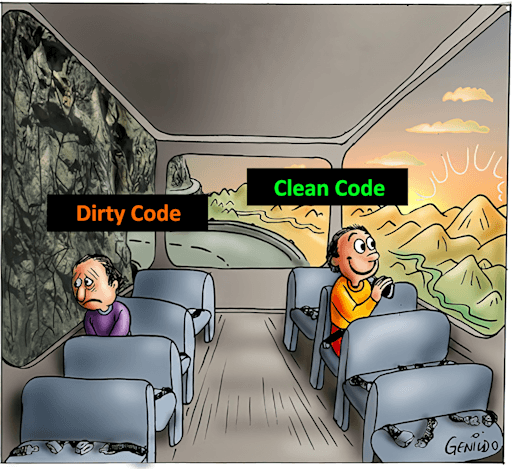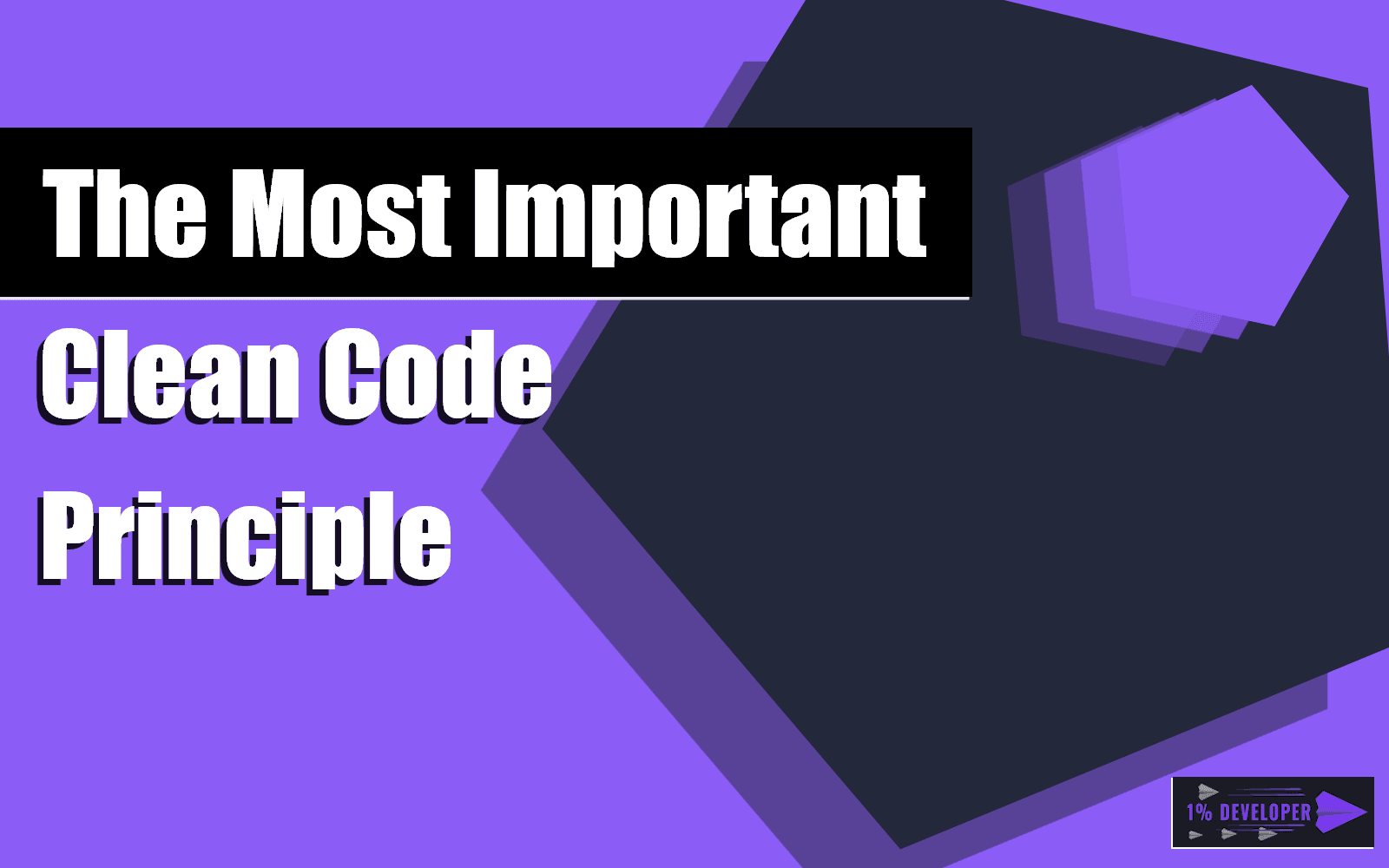All code is dirty.
By that, I mean messy and overly complicated.
Well, almost all code.
I occasionally read listings written by a craftsman, but it’s a rare treat.
The first time I encountered authentic software craftsmanship, I was transfixed.
I desperately wanted to write code like that!
It was a magic moment: Before my eyes was software I could understand at a glance.
At the time, my programming efforts produced convoluted results that even I had difficulty deciphering. Reading my functions felt like walking through knee-deep mud.
When I read this person’s code, I knew I had crossed paths with an accomplished professional.
Right then, my programming career took an unexpected turn: Writing software is more fun, easier to work with, and more productive when the code is crisp and clean.
Programming should be an enjoyable activity, not feel like a death march.

In the subsequent weeks, I focused on writing cleaner software.
Improving my code quality produced positive effects: I gained a reputation as a capable and thoughtful programmer.
My internal motivation skyrocketed. I was again happy 😊 to be a software developer.
How do you feel about code (your own and others)?
- Do you feel reading and modifying most code is too hard?
- Do you wish programming was easier?
- Do you want to be happier as a software developer?
If you answered Yes to all of these, then programming The Clean Code Way is for you:
- Your code will be easy to understand and modify,
- You’ll build a reputation as a dependable programmer,
- You’ll discover untapped enjoyment in programming.
What’s not to love, right?
Today, I want to share with you my ONE PRINCIPLE that, when consistently followed, produces shockingly beautiful code:
Keep It Simple.
Always. In Everything. As simple as possible.
The goal is to write code so radially simple you should understand its behaviour as you read it [1].
Think about what this would mean:
- You wouldn’t need to read through the function listing multiple times. You’d get it the first time.
- You would know in which part of the function to make the change.
- Your life as a software developer would be so much easier. You would avoid those demanding slogs through tedious, convoluted function listings.
How cool would that be?
Two Examples
OK, let’s check out a couple of clean code examples, one in C# and one in TypeScript:
C#.NET Example
Retrieve bank account transaction data via logged-in bank client (e.g. via bank API or website):
// A C# Clean Code Example
private async Task<OrderedAccountTransactions> GetBankTransactions(
ImportAccount account,
DateRangeQuery dateRange)
{
var bankClient = await BankLogin(account.Credential);
return await bankClient.GetTransactions(account, dateRange);
}
This method
- Gets a logged-in bank client, and then
- uses the client to retrieve account transactions for an account within a date range.
It's clean and simple not because of what it does, but what it hides:
- How we log into a particular bank's API, and
- How we read the account transactions.
Those are distracting details, irrelevant at this high level of managing the application's behaviour.
There will be lower-level functions that specifically manage such detailed mechanistic behaviour as logging-in and reading account transactions.
Yet, at this high level, such details are not only irrelevant, but actually represent a distraction from the essential workflow we want to get done.
TypeScript Example
Validate a CustomerRegistration model:
// A TypeScript Clean Code Example
private validate(reg: CustomerRegistration) {
reg.validate();
const existingCustomer = this.customerRepo.getCustomer(reg.email);
if (existingCustomer)
throw new DuplicateCustomerEmailAddress(reg.email);
}
This method undertakes 2 validation actions:
- The passed-in reg instance validates itself, and
- we try to retrieve the customer by email address from the customerRepo and check whether it already exists.
It’s clear what’s happening in this example too.
In both examples, the methods are appropriately named, so short and simple that their purpose is clear. Each delegates behaviour to lower-level functions.
Did you like that?
Do you want to learn how to write super-duper simple code like this?
If so, then you're receiving the correct newsletter. 😉
Footnotes:
[1] Sure, this is not always possible. Sometimes, a listing cannot be further simplified. Nonetheless, in my experience, opportunities to maximally clarify code are often not exploited.

